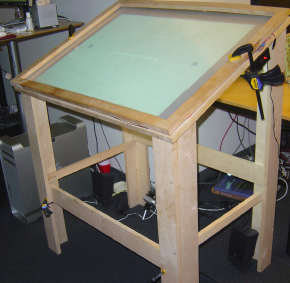

Kenrick Kin, Maneesh Agrawala, Tony DeRose
Abstract:
Multitouch workstations support direct-touch, bimanual, and multifinger
interaction. Previous studies have separately examined the
benefits of these three interaction attributes over mouse-based interactions.
In contrast, we present an empirical user study that considers
these three interaction attributes together for a single task,
such that we can quantify and compare the performances of each attribute.
In our experiment users select multiple targets using either
a mouse-based workstation equipped with one mouse, or a multitouch
workstation using either one finger, two fingers (one from
each hand), or multiple fingers. We find that the fastest multitouch
condition is about twice as fast as the mouse-based workstation, independent
of the number of targets. Direct-touch with one finger
accounts for an average of 83% of the reduction in selection time.
Bimanual interaction, using at least two fingers, one on each hand,
accounts for the remaining reduction in selection time. Further, we
find that for novice multitouch users there is no significant difference
in selection time between using one finger on each hand and
using any number of fingers for this task. Based on these observations
we conclude with several design guidelines for developing
multitouch user interfaces.
Paper (PDF)
To appear in Graphics Interface 2009

